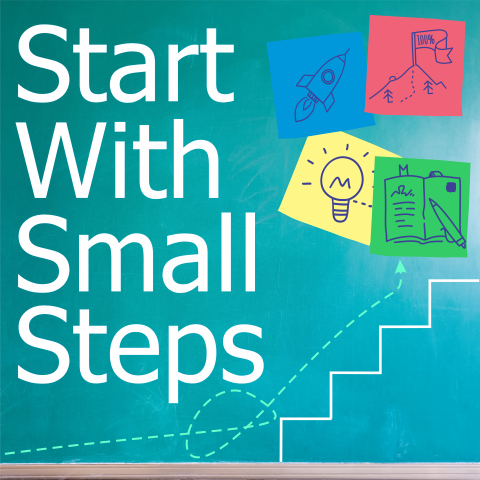Learning is often viewed as a simple matter of acquiring information, but have you ever stopped to ask how you’re learning? Are you skimming books with a cup of coffee in hand or engaging deeply, applying knowledge, and letting it transform your habits? In this fast-paced world where information is abundant, how we absorb it often determines whether it truly changes us. The methods we choose matter—and in this blog, we’ll explore why your learning approach might be the key to becoming a more capable, adaptable person.
Passive vs. Active Learning: What’s the Real Difference?
Think about reading a book in a coffee shop. It’s relaxing, even enjoyable—but if your mind is elsewhere, how much do you retain? Passive learning feels easy, but it rarely sticks. Whether it’s watching videos or listening to podcasts, if you’re not mentally engaged, the material won’t leave a lasting impact.
Active learning, on the other hand, involves testing yourself, applying what you learn, reflecting, and teaching others. It’s about soaking in knowledge with intention. For instance, Jill shares how she quizzes herself on bird species—not just reading names but creating real-world applications and notes to recall them when needed. This deeper engagement embeds the knowledge far more effectively than casual exposure ever could.
Teaching as a Learning Tool
Teaching isn’t just a way to pass knowledge on—it’s one of the most powerful methods for solidifying what you know. When you prepare to teach, you process the material more deeply, anticipate questions, and explain concepts clearly. Jill’s example of podcasting about the Bible or nature showcases this. Her commitment to explaining parables or nature facts helps her internalize those lessons.
The act of teaching forces you to clarify your thoughts, spot gaps in your understanding, and reinforce your own memory. It transforms passive knowledge into practical insight.
Learning Through Projects: The Joy of Doing
Want to master a skill? Try building something with it. Jill describes learning Notion by managing her podcast schedule through a custom setup. Starting simple, she explored basic features, then gradually added complex functionality. Eventually, she built automation tools that streamlined her entire process.
Projects offer practical feedback: things either work or they don’t, and figuring out why is where the real learning happens. Whether it’s automating your pet bird’s environment or crafting your first knitting project, hands-on creation is often the fastest route to real understanding.
Struggle Is Not a Sign of Failure—It’s a Sign of Learning
We often resist the discomfort that comes with new material. But struggling is a crucial part of the learning process. When you’re forced to wrestle with a concept—look it up, experiment, test different approaches—you build resilience and deepen your comprehension.
Jill emphasizes that struggle isn’t failure; it’s the soil where understanding takes root. This is true whether you’re learning software, scripture, or how to prevent weeds in your backyard. The friction you feel? That’s your brain leveling up.
Learning Styles: Know Yourself to Grow Yourself
Some people learn by reading, others through listening, visuals, or hands-on experience. Jill identifies herself as a visual and auditory learner, using audiobooks and visual tools to support her growth. She also highlights how knowing your own style helps you make better learning choices.
The key is customizing your approach to match your strengths—using tools, methods, and routines that resonate with how you naturally absorb information.
Can AI Enhance Learning—Or Get in the Way?
Artificial Intelligence offers incredible tools: customized study plans, quick answers, and curriculum suggestions. Jill uses AI to help plan her podcast topics or troubleshoot issues with Descript. It’s like having a coach that’s available 24/7.
But there are risks: overreliance can breed laziness or make you bypass the struggle that’s essential to deep learning. AI lacks moral judgment and can sometimes feed you inaccurate information. It’s a flashlight, not a compass.
The lesson here? Use AI to enhance your learning, but don’t let it replace the active process of working through material yourself.
The Surprising Joy of Learning What You Didn’t Expect to Love
One of the most inspiring parts of Jill’s reflection is how unexpected passions emerge through learning. From photography to automation to bird care, trying something new opened doors she didn’t know existed.
Sometimes learning begins with indifference or even dislike—like yard work—but the process can still lead to a better life. Not every subject needs to ignite a lifelong passion; sometimes the value lies in what it enables you to avoid or improve.
Conclusion: Learning is Life-Transformation
Learning isn’t just about acquiring knowledge—it’s about shaping the person you become. By engaging actively, taking on projects, embracing struggle, and even teaching others, you don’t just store facts. You become someone more capable, more curious, and more connected to the world around you.
As Jill puts it, “Learning isn’t about filling a bucket—it’s about lighting a fire.” So the next time you pick up a book, open an app, or start a project, ask yourself: Is this lighting a fire in me? And if not—how can you make it?

